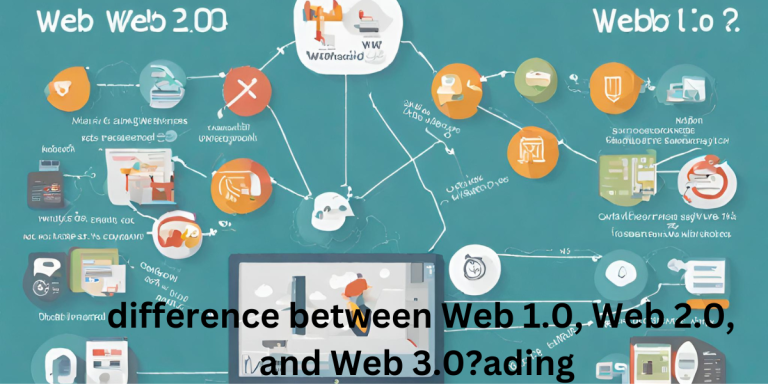How AI and Blockchain are Revolutionizing Profitability in Web 3.0
A new era of digital innovation and revolution has arrived with Web 3.0. Two ground-breaking technologies, artificial intelligence (AI) and blockchain, are at the center of this transition. Together, these two pillars are revolutionizing profitability and drastically altering the digital world. This in-depth investigation will show how AI and blockchain are collaborating to reimagine business models, improve user experiences, and open up new revenue streams in Web 3.0.
Understanding Web 3.0
It’s essential to understand the fundamentals of Web 3.0 before diving into the profound effects of AI and blockchain. Web 3.0, also known as the Semantic Web, signifies a paradigm shift in how we use the internet. Web 3.0 places more emphasis on data intelligence, decentralisation, and improved user agency than its predecessor, Web 2.0, which was primarily concerned with user-generated content and social networking.
Web 3.0 envisions a web where consumers have more control over their digital identities and assets, where machines can understand and interpret data, and where trust is integrated into every interaction. The capabilities of blockchain and AI are perfectly compatible with this revolutionary idea.
The Synergy of AI and Blockchain
1. Data-Driven Decision Making
In the Web 3.0 environment, data is king. AI is essential because of its capacity to analyse huge datasets and derive valuable insights. Businesses may make data-driven choices, optimise processes, and spot lucrative possibilities by using AI-driven analytics. The predictive power of AI makes it possible to foresee consumer behaviour and industry trends, enabling proactive business tactics.
2. Enhanced User Personalization
In Web 3.0, personalisation has emerged as a pillar of the user experience. To provide highly personalised content, goods, and services, AI-powered computers examine user information, preferences, and behaviour patterns. This raises engagement and conversion rates, which in turn increase revenue by enhancing user pleasure.
3. Decentralized Finance (DeFi)
Blockchain’s decentralization and smart contract capabilities have given rise to DeFi, a financial revolution within Web 3.0. DeFi platforms eliminate intermediaries, offering users direct access to financial services like lending, borrowing, and trading. This disintermediation reduces costs, increases transparency, and opens up new revenue streams for participants.
4. Trust and Security
In Web 3.0, personalisation has emerged as a pillar of the user experience. To provide highly personalised content, goods, and services, AI-powered computers examine user information, preferences, and behaviour patterns. This raises engagement and conversion rates, which in turn increase revenue by enhancing user pleasure..
5. Supply Chain Efficiency
AI and Blockchain are transforming supply chain management by providing real-time visibility and traceability. AI-powered analytics optimize logistics, inventory, and demand forecasting, reducing operational costs. Meanwhile, blockchain ensures the integrity of supply chain data, reducing the risk of counterfeit products and enhancing product quality.
6. Tokenization of Assets
Blockchain enables the tokenization of assets, from real estate to artwork. AI-driven valuation models help assess the worth of these digital assets accurately. This opens up new investment opportunities and markets, allowing individuals and businesses to monetize assets more efficiently.
Real-World Applications
The synergy of AI and blockchain is not a theoretical concept. It is driving tangible innovations across various industries.
- Healthcare: AI analyzes medical data for diagnosis and treatment recommendations, while blockchain ensures the security and privacy of patient records.
- Entertainment: AI-driven content recommendation systems enhance user engagement, while blockchain-based NFTs (non-fungible tokens) enable creators to monetize digital art and collectibles.
- Finance: DeFi platforms powered by blockchain offer decentralized lending, borrowing, and yield farming opportunities, while AI detects anomalies and fraud in financial transactions.
- Supply Chain: AI optimizes supply chain logistics, and Blockchain ensures transparency and traceability in the movement of goods.
Challenges and Considerations
While the potential of AI and blockchain in Web 3.0 is immense, it is not without challenges. These include regulatory concerns, data privacy issues, and the need for scalable infrastructure. Additionally, AI and blockchain require skilled professionals to implement and maintain them effectively.
Conclusion
Web 3.0 represents a paradigm shift towards a more intelligent, decentralized, and user-centric internet. The convergence of AI and blockchain lies at the core of this transformation, offering businesses unprecedented opportunities for profitability and innovation. As these technologies continue to evolve, their impact on various industries will only grow, reshaping the digital landscape for years to come.
Leveraging AI, Blockchain, and DeFi in Web 3.0 to Unlock Opportunities
Web 3.0 is a brand-new internet era that aims to completely change how we interact with technology. There are countless opportunities to realise the full potential of this new era thanks to the development of AI, Blockchain, and DeFi. These technologies can be combined to build a decentralised, open environment that facilitates safe and effective transactions. Blockchain can offer a tamper-proof, unchangeable record of transactions, while AI can improve decision-making processes. DeFi can make financial services available to anybody, regardless matter where they live or how much money they have. By utilising these technologies, we can create a more inclusive and equitable future where everyone has access to opportunities. It’s crucial to accept these technologies and investigate them as we progress towards Web 3.0.
Future profitability in Web 3.0 explored.
Numerous professionals in the sector are now investigating the potential for profitability in the area of Web 3.0. There is an increasing need for decentralised systems that prioritise security, privacy, and user control as the internet continues to develop. With the transition to Web 3.0, companies have a rare chance to profit from cutting-edge innovations like blockchain, smart contracts, and decentralised applications. Utilising these technologies, businesses may develop cutting-edge solutions that provide customers with more transparency, efficiency, and value. As a result, those who are able to successfully negotiate Web 3.0’s complexity stand to gain a substantial competitive advantage. However, success in this field necessitates a thorough knowledge of the underlying technologies and a readiness to adopt new ones.





